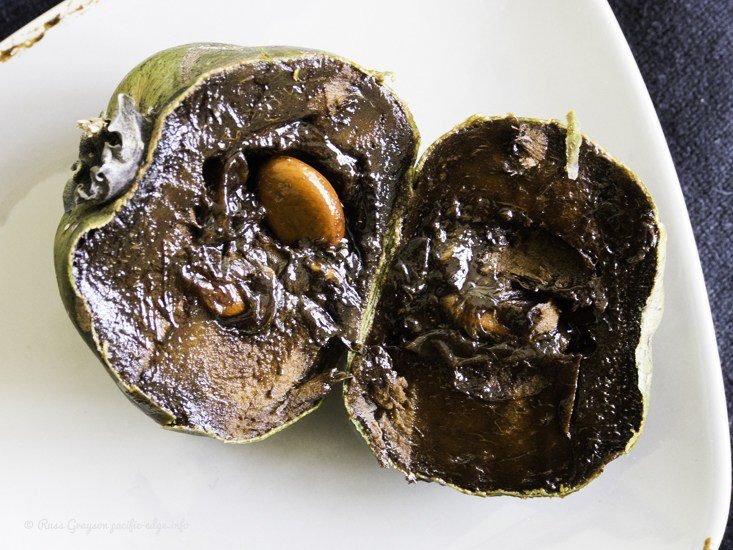Photo and story by Russ Grayson
IT IS SOFT, black and gooey. It looks past its prime. It is all these things and it is delicious.
I am talking about black sapote, a tree fruit seen more often now than in the past though it is far from common. Not the thing you will find in your local supermarket.
Black sapote goes by other names — chocolate pudding fruit and chocolate persimmon. The latter name is quite accurate because it really is a type of persimmon.
Common name: Black sapote; chocolate pudding fruit.
Botanical name: Diospyros nigra (‘nigra’ meaning the ‘black’ member of the Diospyros genus of plants).

Growth form/conditions:
- an evergreen tropical tree that will grow in warm temperate climates
- can reach 25m in favourable microclimates
- leaves are dark green, oblong and tapered at both ends, around 10–30cm in length
- the round fruit grows to 5–10 cm diameter
- grows in a variety of soil conditions
- tolerates light frosts
- drought sensitive
- needs protection from winds.
Reproduction: From seed.
Centre of diversity: Central America and northern South America.
Uses: Food; eaten raw.
Edible part: Fruit. The fruit has a flavor, color and texture likened to chocolate pudding.
The fruit is firm and green when picked and ripens to a darkish greeenish-yellow as the fruit softens and ripens. The skin is inedible but not the black pulp inside, whose texture and flavour when ready gives the fruit its name.
Black sapote fruit is ready to eat when it is soft, when you can press it with a finger and the impression remains.

Uses in food garden design: This is a tree for the larger tropical and subtropical community gardens and is planted in the tree cropping/food forest zone. Establish a tree where it will not overshadow vegetable beds.
Notes: Black sapote grows at least as far south as Sydney in the warm temperate climatic zone. Planted in the Permaculture Interpretive Garden at Randwick Sustainability Hub in Sydney, the young trees suffered from the cold, blustery winter winds and did not survive. A warm, protected microclimate would be required.





